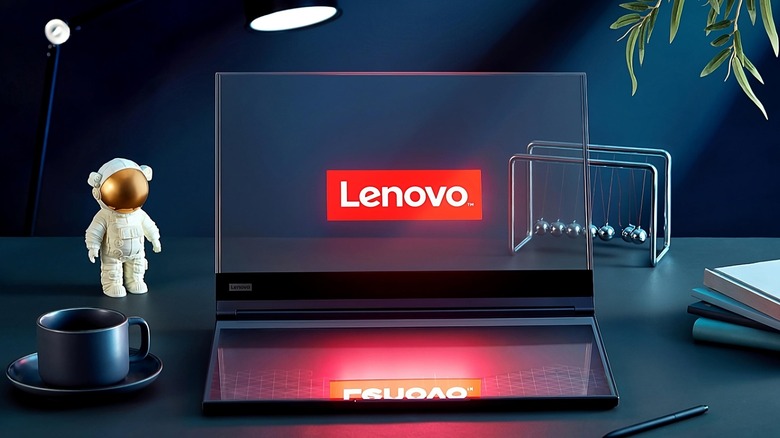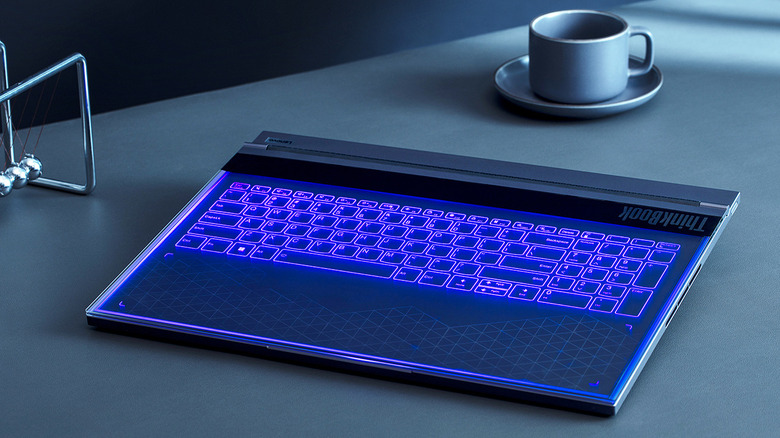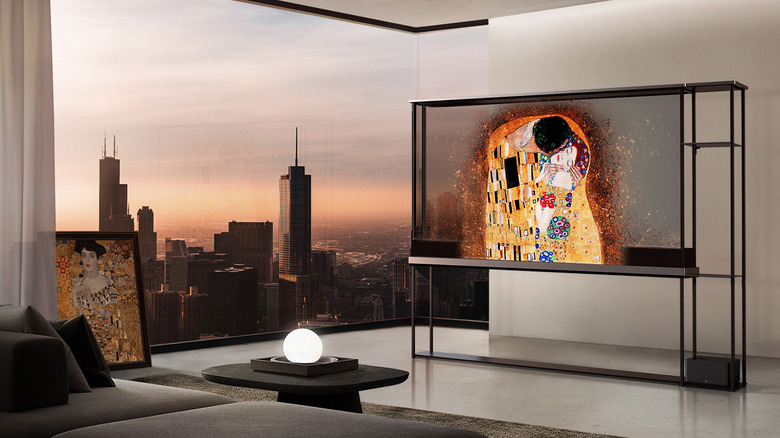Lenovo's Transparent Display Notebook Concept Is Cool, Pointless, And We Want One
On Sunday, Lenovo issued a press release unveiling the slate of products it was debuting at this year's MWC Barcelona event, and one of them is an absolute doozy. That's the ThinkBook transparent notebook, meaning it has a transparent display. Why would most people need a transparent display? Your guess is as good as ours, but it's still incredibly cool. The press release refers to it as "Lenovo's latest groundbreaking innovation proof of concept," featuring "a world-first 17.3-inch Micro-LED transparent display."
At least going from what the tech company states in its press release, Lenovo's goal here is ostensibly using generative AI and the transparent display to create some kind of augmented reality productivity and content creation software. "Through the power of Artificial Intelligence Generated Content (AIGC), the transparent screen opens up new avenues of work collaboration and efficiency by enabling the interaction with physical objects and overlaying digital information to create unique user generated content," Lenovo continues.
More on the transparent ThinkBook
The press release doesn't get into too much detail about how the transparent display really works, beyond the fact that it uses Micro-LEDs. Lenovo claims it provides "many advantages in the development of transparent displays." The press release touts the display's color saturation and contrast as being particularly good, with the transparent screen having 1000-nit brightness.
"The technology also offers more possibilities in the future with further optimization of image quality, durability, and adjustable transmittance to provide more privacy or more transparency to interact with real-world objects," Lenovo added. All told, Lenovo isn't exactly explaining what most everyone would actually use this thing for, instead laying out vague notions of a laptop that seamlessly blends into its surroundings. It looks incredibly cool, but who would buy this thing and why?
For now, that's not any kind of real concern. As noted earlier, this is entirely a proof of concept, not something that Lenovo is unveiling as an upcoming SKU that's dropping in 2024. So if you think that you might actually want to spend money on something like this, keep an eye on upcoming Lenovo updates to see if this ever turns into a retail product.
How else are transparent displays being used?
Lenovo's proof-of-concept laptop isn't the first time that transparent displays have been unveiled. Last month, at the annual Consumer Electronics Show in Las Vegas, LG unveiled its first transparent OLED TV. On some level, this makes at least a little bit more sense than a transparent laptop display, because a transparent flat-screen TV opens up all sorts of new possibilities for how TVs can be displayed in a given room.
Though no pricing information was revealed by LG at CES, these transparent OLED TVs are surely going to be incredibly expensive. They're essentially fancier versions of the LG Signature OLED M series of wireless TVs that, depending on the panel size, retail from high four figures to low five figures.
Transparent OLED displays in general go back further. In 2015, Samsung introduced transparent OLEDs, while LG had previously touted the technology for use cases that make more sense than consumer TVs, like storefront doors and windows. LG introduced its tech in 2021 as, essentially, upgraded window glass. Sure enough, the transparent OLED section of LG's website is part of the department that includes digital signage and other commercial displays. There, LG touts "augmented engagement," transparent touchscreens that blend into the room for augmented reality effects.


